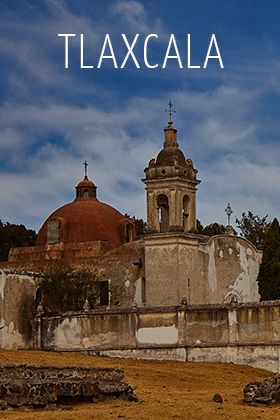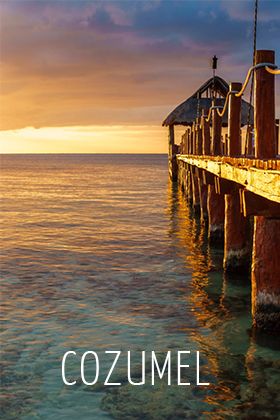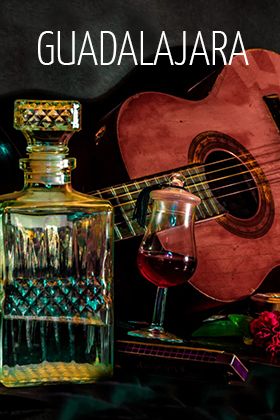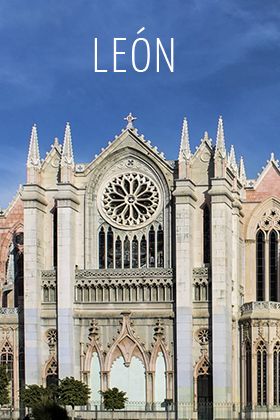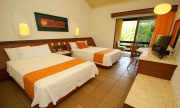The City of Dolores Hidalgo
by: Travel by México

The City of Dolores Hidalgo
by: Travel by México
The city officially known as Dolores Hidalgo, Craddle of the Independance, owes its name to the congregation of Nuestra Señora de Dolores, or Our Lady of Sorrows, who settled in the north part of the state of Guanajuato in an ancient Otomi area called Cocomacan, or the place where herons hunt.
In the late eighteenth century, the congregation became established as a town, but it was not until the second half of the nineteenth century, when it was officially recognized as a city.
The city honored its historical significance with the name of Hidalgo, in honor of Don Miguel Hidalgo and Costilla, who in the early morning of September 16, 1810, in the court of the parish of Our Lady of Sorrows, called to the people to gather together and take up their arms in the fight for the independence of Mexico. Dolores Hidalgo is located in the northern part of the state of Guanajuato, 54 km from the city of Guanajuato, and 317 km from Mexico City, resting at an altitude of 1,980 meters above sea level. It is bordered on the north by San Diego Union, to the east with San Luis de la Paz and Allende, with Guanajuato to the south, and to the west by the town of San Felipe.
The terrain is mountainous toward the south, with many well known mountains and hills such as those of El Pinon, El Comal, El Mesquite, La Bufa, Picacho de Santa Cruz, La Mesa de los Leones, El Picacho and La Cadosa, with elevations ranging between 1,910 to 2,800 meters. This rough surface makes up approximately 50% of the territory, with the rest being made up of flat areas and rolling hills. The most important water ways for Dolores Hidalgo are the Laja River, which crosses the town from northwest to southeast, and the Batan River or Trancas, a tributary of the former. Its climate is arid or semi-warm (hot during the day but cold at night) with a maximum temperature of 36 º C (97 F) in the summer, and a minimum of 3 º C (37 F) in winter (average annual temp is 17 º C (62 F)).
The rainy season in the region occurs between the months of May and September, although in recent years this has been decreasing due to the constant climate changes which result from the pollution that affect the whole republic. History: In this place on the early morning of September 16, 1810 in the court of the parish of Our Lady of Dolores, Father Miguel Hidalgo gave El Grito, the cry that called the people to fight for their freedom and independence, which is why Dolores Hidalgo is known as the true Cradle of Mexican Independence. Dolores Hidalgo is well known for its regional crafts, most notably the famous high quality Talavera dining ware with Spanish influences, as well as the more traditional pottery vases, pots and jars, and hand decorated ceramics.
The Mosaico Artesanal is a festival that is held every August, where you can admire and acquire a variety of original pieces. While visiting the city’s zocalo, be sure to try the famous traditional snow cones which are made using traditional methods, and suited to fit all tastes. Flavors range from more traditional like vanilla, chocolate, strawberry, walnut, to the more unusual such as avocado, alfalfa, pork, mole, nopal, cheese, tuna, tequila, etc. The milky snow cone is one of the most popular with vanilla, nuts and other finely chopped ingredients like dates, almonds, prunes, walnuts and pine nuts.
The stunning architecture of this small town can be seen in the monumental buildings, like the Parroquia de Nuestra Señora de Dolores, the Parroquia de La Asuncion, the Templo de la Tercera Orden and the Casa de Visitas. The house of Don Miguel Hidalgo y Costilla, and the Casa de Abasolo are also found in the downtown, which was inhabited by Juarez in 1863 and by Maximilian in 1864.
An impressive monument in honor of the Heroes of the Independence, Hidalgo, Allende, Aldama and Abasolo, was erected in the late nineteenth century. No trip would be complete without visits to: the Mueseum of the Independance, the Casa de las Visitas, the Parroquia de Nuestra Señora de Dolores, the Parroquia de La Asuncion, the Templo de La Tercera Orden, the Mausoleo, the Museo Jose Alfredo Jimenez, the Monument to Hidalgo, the Monument to the Flag, the Fountain of dancers, and the Hacienda de la Erre, and much more.





